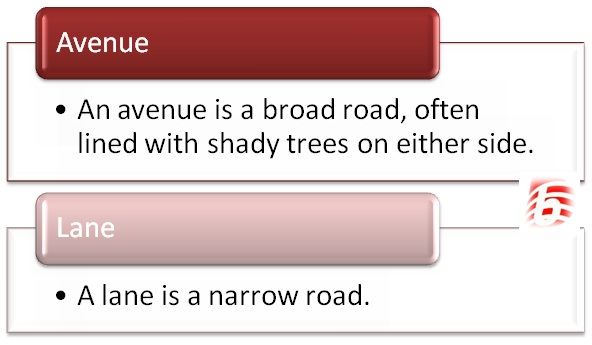Lane vs Avenue
Understanding the difference between a lane and an avenue can be confusing, especially when you notice various tags used in street names like Boulevard, Drive, Path, Road, and Street. Both lanes and avenues are related to roads, but they differ in a few aspects. A lane is a narrow road, while an avenue is a broader road, typically lined with trees on both sides. There are other differences between lanes and avenues as well.
What does Lane mean?
A lane is characterized by the presence of several houses and is primarily meant for traffic and its regulation. Lanes typically do not have traffic coming from multiple directions, but, at most, two sides. You can find more lanes in rural areas or countryside, and they are usually quiet and calm.
What does Avenue mean?
In contrast to a lane, an avenue is not characterized by the presence of many houses. There are fewer houses along an avenue. In British English, an avenue refers to a tree-lined approach to a country house or a similar building. In North America, an avenue is a thoroughfare running at right angles to the streets in a city laid out on a grid pattern. Traffic comes from different directions on an avenue, which you can find mostly in towns and cities. Avenues are also characterized by the noise of passing traffic.
What is the difference between Lane and Avenue?
Several differences exist between a lane and an avenue in terms of their width, house density, locality, and traffic.
Key Takeaways
- A lane is a narrow road, while an avenue is a broad road, often lined with trees on both sides.
- Lanes are primarily found in rural areas, while avenues are mostly found in cities and towns.
- Avenues generally have fewer houses along them compared to lanes, and they accommodate traffic from different directions.
